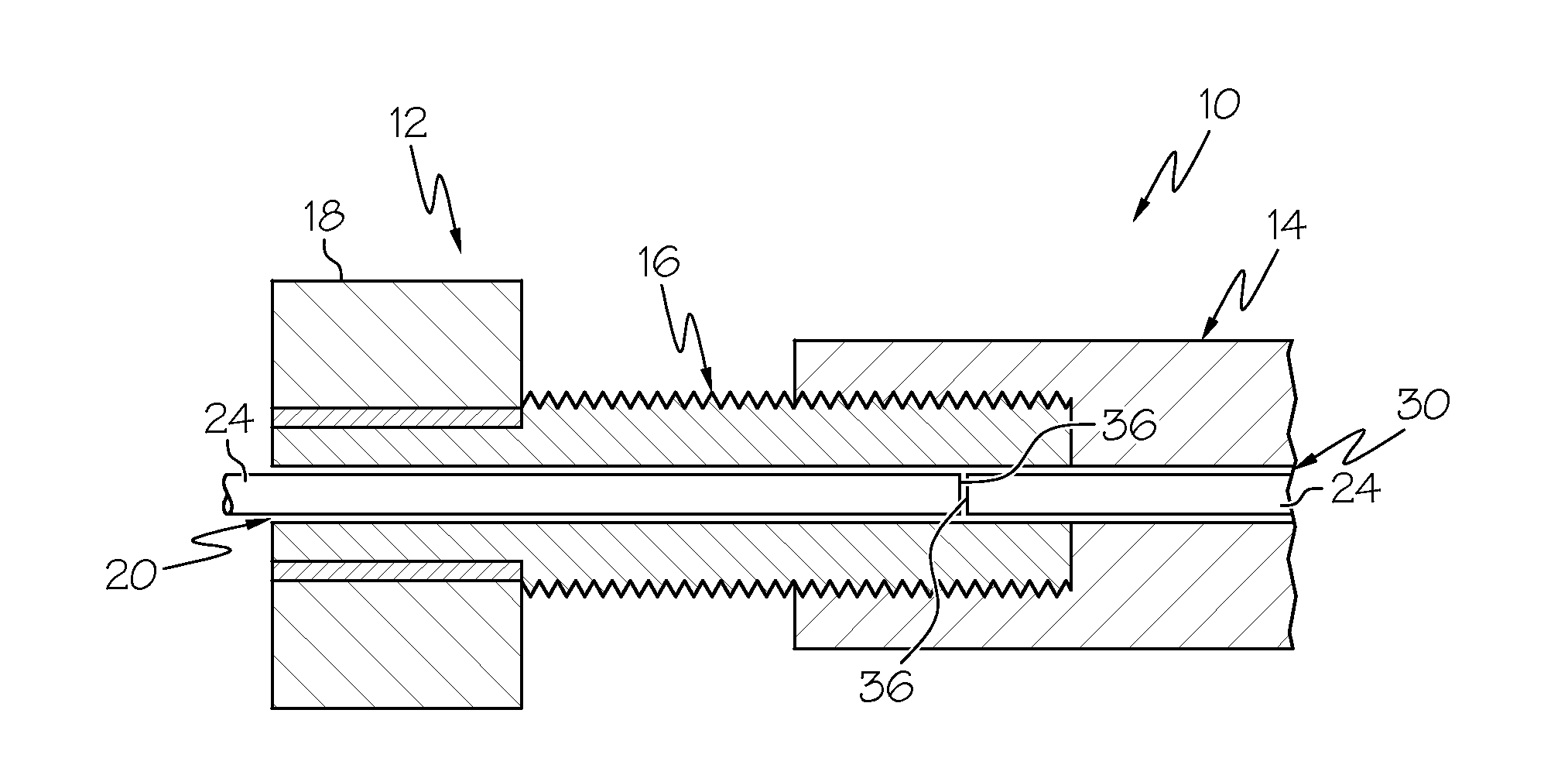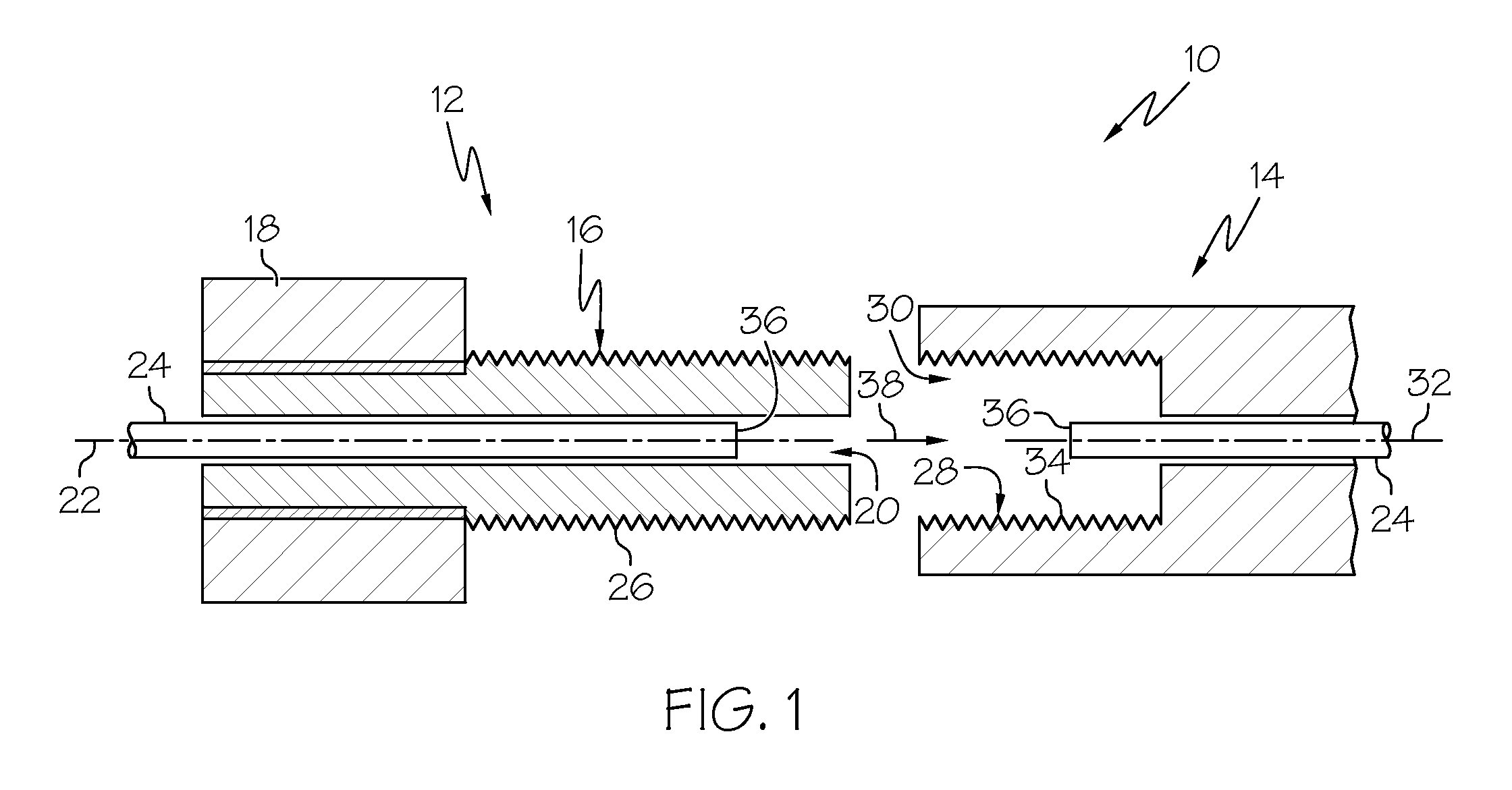Optical fiber connection assembly
a technology of optical fiber and assembly, applied in the field of optical fiber connection assembly, can solve the problems of optical fiber end, optical fiber misalignment, transmission loss, etc., and achieve the effect of reducing or minimizing air gap, precise torque control, and avoiding loss
- Summary
- Abstract
- Description
- Claims
- Application Information
AI Technical Summary
Benefits of technology
Problems solved by technology
Method used
Image
Examples
Embodiment Construction
[0019]The optical fiber connection assembly is configured to align ends of optical fibers along an optical path for a transmission of light across the optical fibers. Referring initially to FIG. 1, the optical fiber connection assembly 10 comprises a torque fitting 12 and a fitting connector 14. The torque fitting 12 comprises a threaded body portion 16, a torque-limiting body portion 18, and an optical fiber accommodating channel 20. The threaded body portion 16 and the torque-limiting body portion 18 are arranged substantially concentrically along a longitudinal axis 22 of the torque fitting 12. The channel 20 is oriented along this longitudinal axis 22, extends through opposite ends of the torque fitting 12, and defines a cross-sectional area sufficient to accommodate an optical fiber 24. The threaded body portion 16 comprises a mechanical thread 26. The mechanical thread 26 defines a compressive direction of rotation, as shown by the clockwise directional arrow depicted in FIGS....
PUM
 Login to View More
Login to View More Abstract
Description
Claims
Application Information
 Login to View More
Login to View More - R&D
- Intellectual Property
- Life Sciences
- Materials
- Tech Scout
- Unparalleled Data Quality
- Higher Quality Content
- 60% Fewer Hallucinations
Browse by: Latest US Patents, China's latest patents, Technical Efficacy Thesaurus, Application Domain, Technology Topic, Popular Technical Reports.
© 2025 PatSnap. All rights reserved.Legal|Privacy policy|Modern Slavery Act Transparency Statement|Sitemap|About US| Contact US: help@patsnap.com



